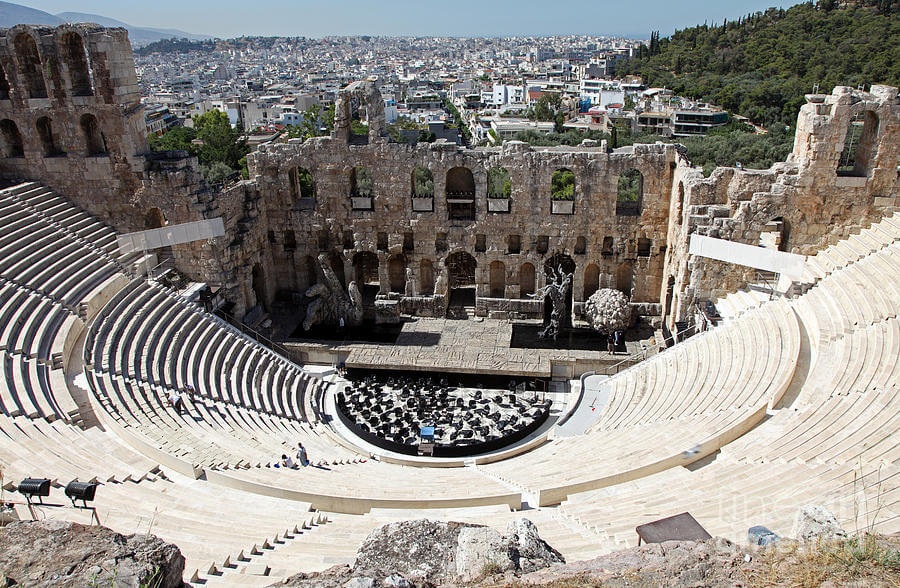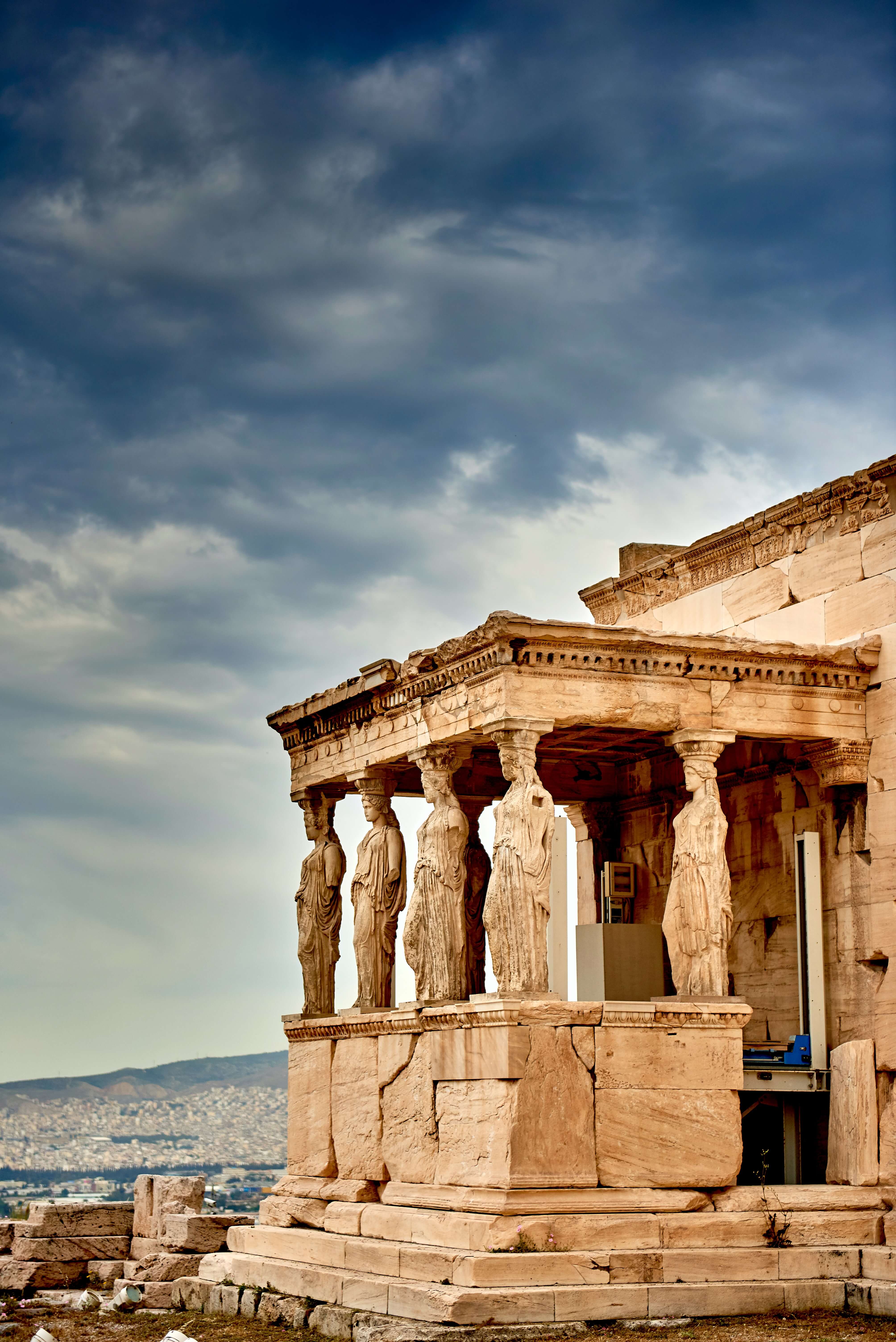Acropolis
Firstly, we are heading to the Acropolis, a worldwide heritage site. The Parthenon in particular, is the most iconic monument of the ancient Greek civilization. Visiting Athens without seeing this treasure is unforgiveable.
|
The Theater of Dionysus Theatre of Dionysus, prototype of Greek theatres, situated on the south side of the Acropolis in Athens, in which all extant classical Greek plays were first presented. Dedicated to Dionysus, the god of wine, revelry, and drama, it was established in the sixth century BC but took its current form a couple of centuries later. Placed adjacent to temples of nature and of the fertility god Dionysus, it was used for dramatic performances, which, together with a procession and sacrifice, composed the annual spring festival of the god. |
 |
Interesting Information:
|
Temple of Athena Niki The Temple of Athena Nike, built entirely of Pentelic marble, on the southwest bastion of the Acropolis, was completed in 420 BCE during the restoration of Athens after the Persian invasion of 480 BCE and was designed to greet those visiting Athena’s complex. Athena was patron deity of Athens and Nike was the goddess of victory often associated so closely with her that the two became synchronized as Athena Nike ("Athena of Victory"). The temple was the first Ionic structure to be built on the Acropolis and honored Athena in her role as protector and defender of Athens and provided 5th-century BCE visitors with a kind of preview of the other temples dedicated to the goddess they would see after passing through the gate |
 |
Interesting Information:
It was built over the remains of an earlier sixth-century temple to Athena that had been demolished by the Persians in 480 BC. The temple was an expression of Athens’ ambitions to defeat Sparta and become a world power. The frieze of the temple refers to Athenian victory over the Persians.
It was designed by Kallikrates, who was responsible for the construction of the Parthenon. The Temple of Athena Nike was finished around 420 BC.
|
The Parthenon The Parthenon is the centrepiece of a 5th-century-BCE building campaign on the Acropolis in Athens. It was built in the mid-5th century BCE under the architects Ictinus and Callicrates with the supervision of the sculptor Phidias and it was dedicated to the Greek goddess Athena Parthenos (“Athena the Virgin”). Constructed during the High Classical period, it is generally considered to be the culmination of the development of the Doric order, the simplest of the three Classical Greek architectural orders. The temple’s harmonic proportions, precise construction, and lifelike sculptures have been celebrated and emulated for thousands of years. The Parthenon is often regarded as a monument to democracy, which was founded in Athens during this period, as well as a tribute to the Athenians’ victory in the Greco-Persian Wars (492–449 BCE). |
 |
Interesting Information:
|
Erechtheion The Erechtheion, designed by the architect Mnesikles, was a complex building constructed in the last twenty years of the 5th century BC. It incorporated the sacred symbols of Poseidon’s struggle with Athena for hegemony over Αthens: the olive tree given to the city by Athena; the marks in the bedrock left by Poseidon's trident; and the spring of salty water that arose after he smote the rock. An Ionic frieze surrounded the Erechtheion’s main building and north porch, decorated with figures of gods, heroes and mortals who likely composed scenes related to the myths and cults encompassed by the temple. Highlight: The Erechtheion’s best-known feature may be its south porch, whose roof, instead of being supported on columns, rested on the heads of six ‘’Korai’’ statues – the famous Karyatids. |
 |